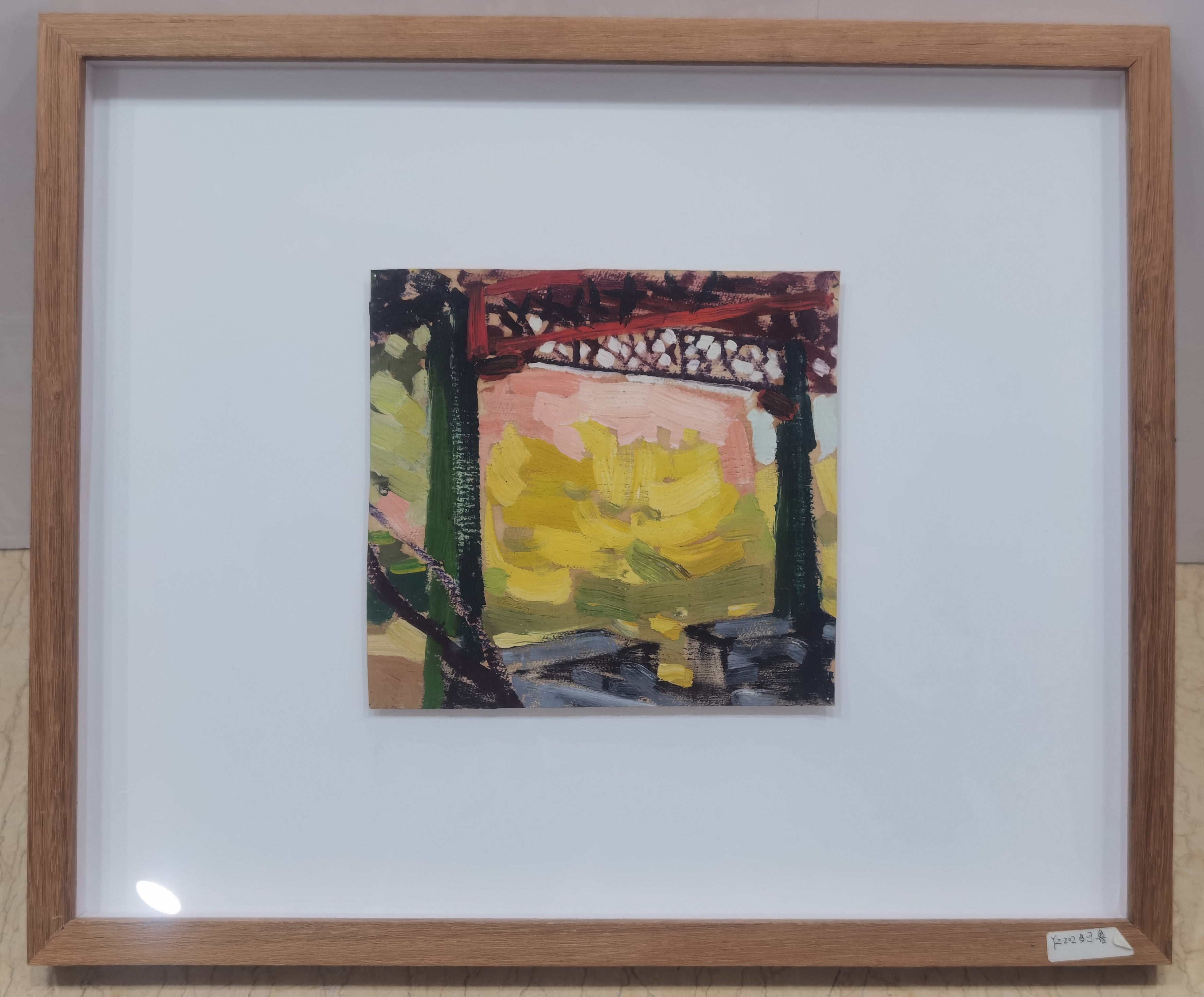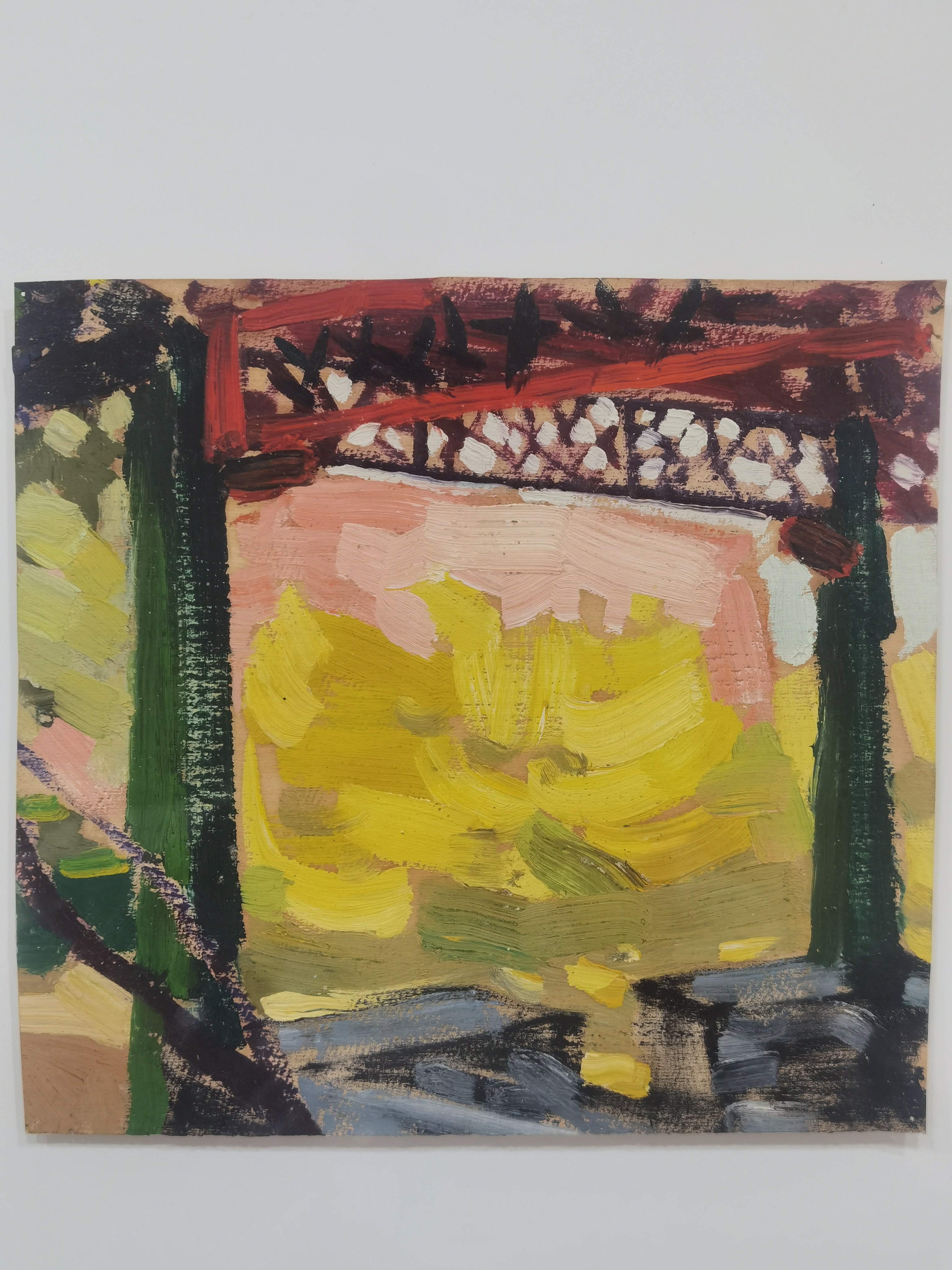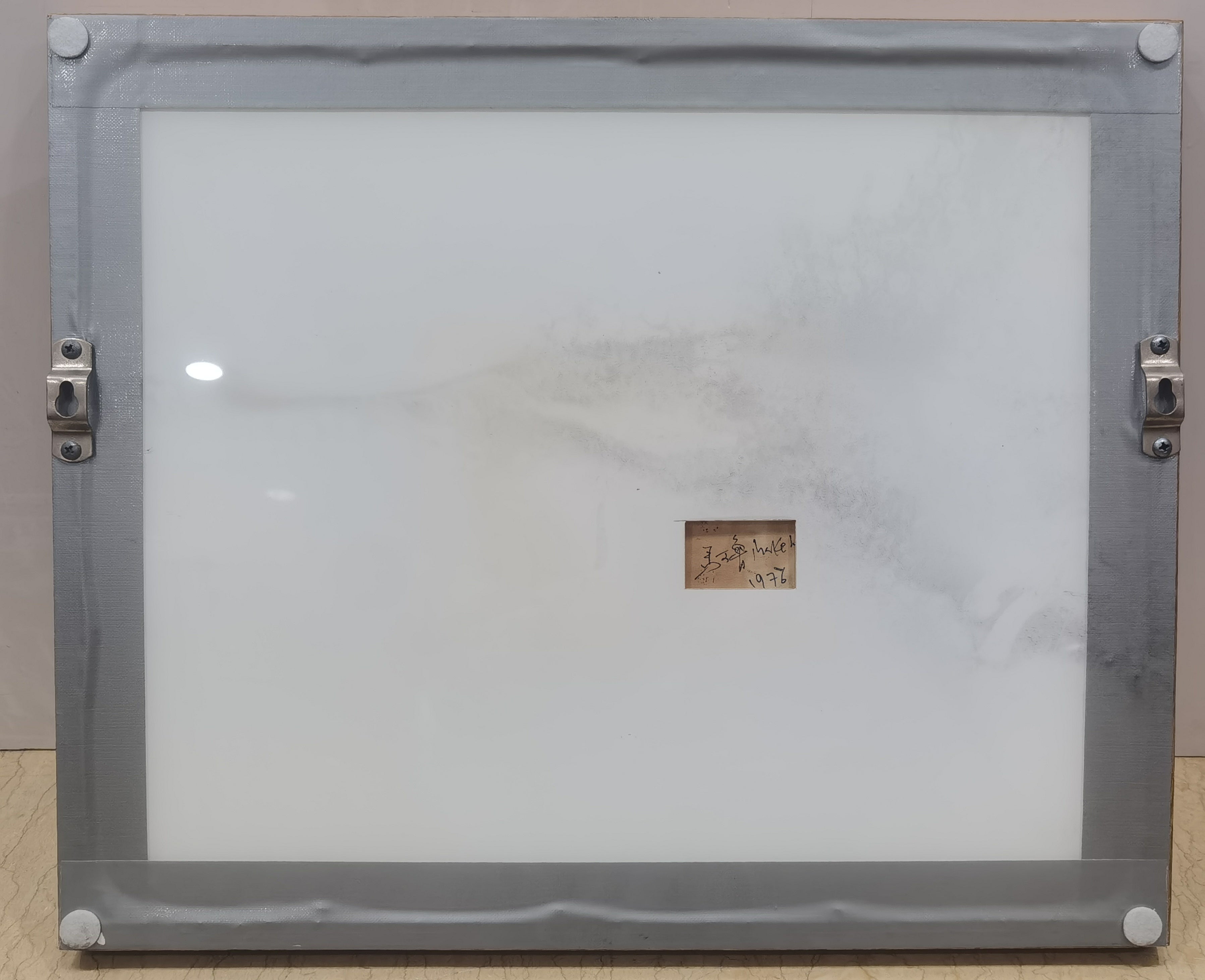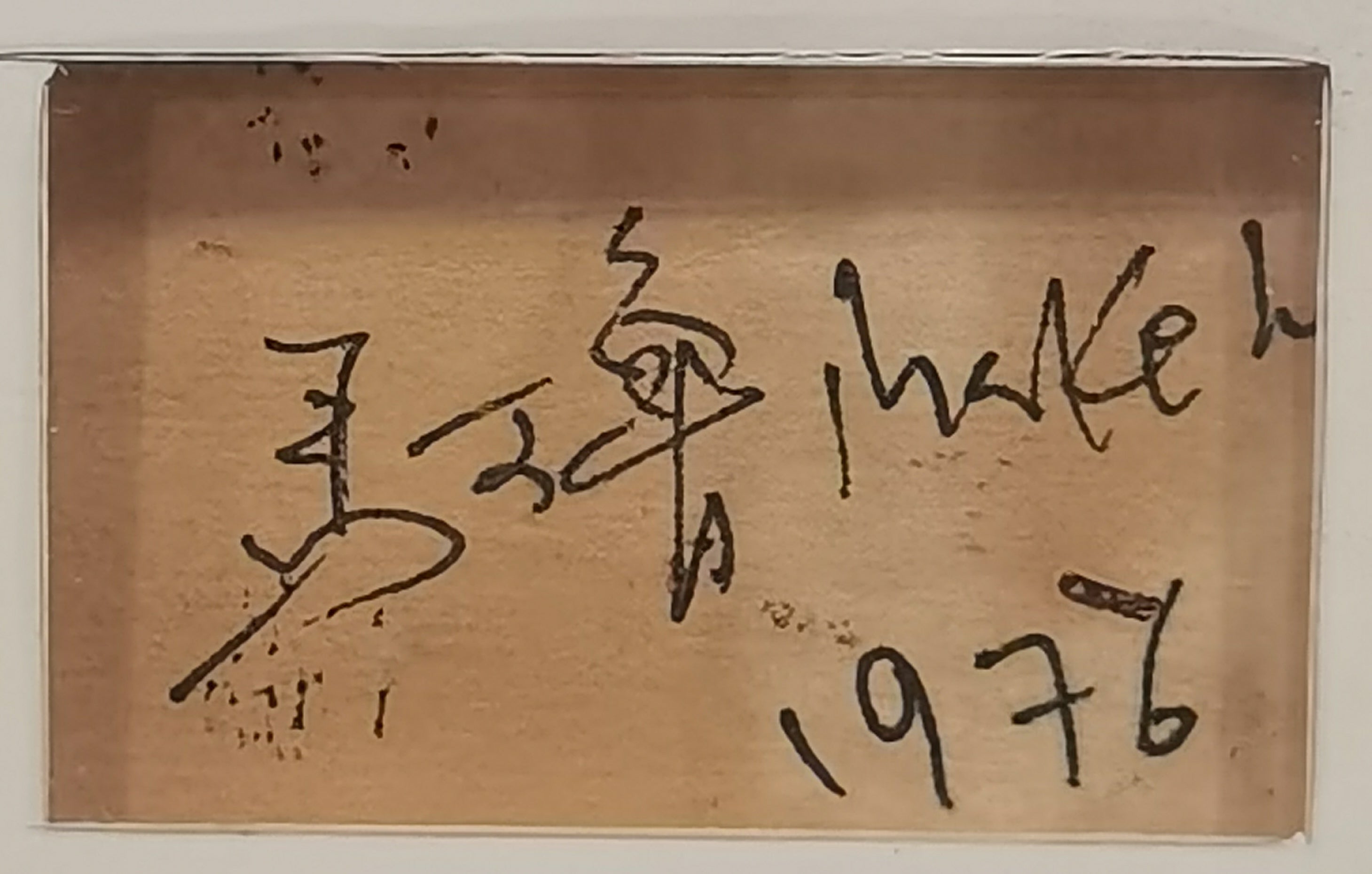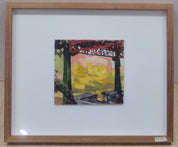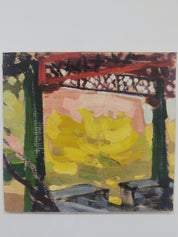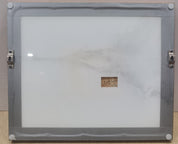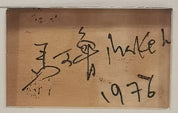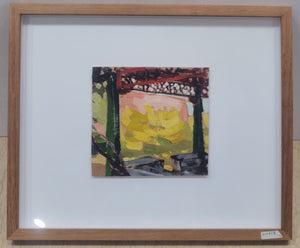Palace Wall
Ma Kelu
Artwork Details
Artwork Description
Title: Palace Wall
Artist: Ma Kelu
Date: 1976
Medium: Oil
Dimensions: 8.0 x 7.6 in (20.3 x 19.3 cm)
1. Artwork Identification:
Palace Wall captures a fleeting moment in bold, expressive brushwork. The composition depicts a traditional Chinese architectural element—possibly part of a pavilion or imperial structure—framed by luminous swaths of foliage rendered in saturated yellow and verdant green. While recognizably referential to landscape, the painting distills the scene into rhythmic gestures and color fields, balancing figuration and abstraction.
2. Artistic Style and Influences:
This work exemplifies Ma Kelu’s early experimentation with “en plein air” painting, heavily influenced by Impressionism yet ultimately veering into abstraction. The application of color in thick, rapid strokes reveals the artist's move toward subjective perception over realism, echoing the works of Post-Impressionists like Van Gogh while maintaining a distinctly Chinese sense of spatial simplicity. The palette is evocative of seasonal light and memory, embodying Ma’s desire to paint what he feels, not just what he sees.
3. Historical Context:
Created during the height of the Cultural Revolution, Palace Wall represents the defiant spirit of China’s “No Name Group”—an underground collective of artists, including Ma Kelu, who rejected the rigid constraints of state-sanctioned art. At a time when Socialist Realism dominated artistic production, Ma and his peers sought to reclaim visual language for personal expression. This painting reflects the quiet radicalism of those who painted for freedom, not propaganda.
4. Provenance:
Provenance documentation can be provided upon contact.
5. Condition and Conservation:
The artwork is in very good condition. The oil surface shows no signs of cracking or fading. The pigments remain vibrant and the panel structurally sound.
6. Artistic Significance:
As one of the earliest works by Ma Kelu, Palace Wall is both a historical and aesthetic landmark. It demonstrates his early move toward non-official, spiritually autonomous art in defiance of imposed ideology. Ma’s reduction of architectural and natural forms into blocks of vibrant color was an essential step in his lifelong commitment to abstraction. This piece not only speaks to the resilience of personal vision under political repression but also prefigures the broader shift in Chinese art toward individualism and global engagement.

